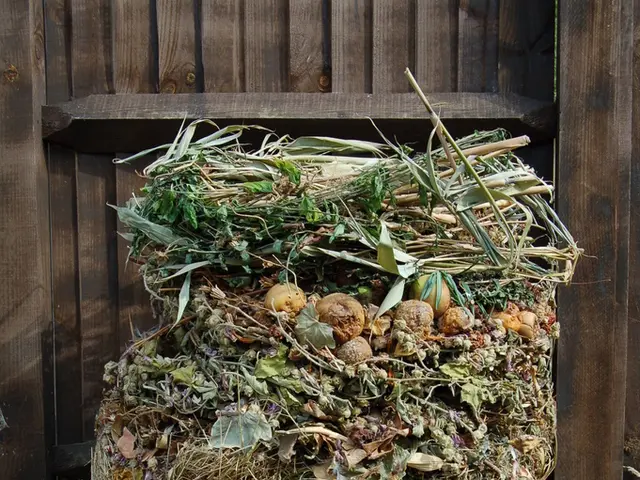Planning to acquire a dilapidated castle? Here's what you should be aware of
Navigating the Complexities of Buying a Historical Property in England
For those considering the purchase of a historical property or ruin in England, it's essential to be aware of the unique legal considerations and responsibilities involved.
Many ruins and historical sites in the country are designated as Scheduled Monuments, a status that protects them under law. This means that any works, including repair, alteration, or changes causing loss or damage, require official consent from the Department for Culture, Media and Sport (DCMS) [1]. Unauthorized disturbance or damage to these sites is a criminal offense.
Consent and Restrictions
Owners cannot use metal detectors or remove artifacts without a license. The legal framework is designed to preserve the site's historic and archaeological significance, limiting what an owner can do with the property [1].
Management Responsibilities
Ownership may involve direct responsibility for maintenance, security, and public access, which can be onerous and expensive. Some ruins, such as those managed by English Heritage, relieve owners of these duties. However, if not, the owner must handle upkeep and possibly allow or manage public access [1].
Costs and Grants
Maintaining old buildings and ruins can incur significant costs. However, Historic England offers grants and financial support for eligible properties, especially those considered "at risk," to assist with repairs and conservation [1].
Public Access and Liability
Depending on the site's designation and ownership arrangements, there could be requirements or expectations regarding public access. Restricting access might increase management and liability responsibilities [1].
A prime example of navigating these complexities successfully is the Kirkham estate in North Yorkshire, currently for sale for £25 million with GSC Grays. The estate includes an early 19th century, pale gold-coloured mansion, and the craggy remnant of the Augustinian Kirkham Priory, hollowed out by commissioners to Henry VIII. The new owner can enjoy the ruins without the responsibility to manage them [2].
Another example is Mettingham Castle in Suffolk, a little-known site with an impressive provenance, which is a Scheduled Monument for sale with Savills for £1.6m. The castle includes a six-bedroom, converted timber-frame barn within the crumbled fortifications of this historic site [3].
When restoring old buildings, Alexander Macfarlane, head of residential building consultancy at Strutt & Parker, recommends a conservation-led approach, with tradespeople who understand the materials and methods involved [4].
One such successful restoration is Hellifield Peel in North Yorkshire, an example of a defensive relic of the 14th century that was successfully renovated into a superlative family home [5].
For those interested in historical properties, it's crucial to consult heritage professionals or legal advisors before purchase. Lucy Denton, a writer and architectural historian who has worked for Adam Architecture, Sotheby's, ArtUK, and has written for Hudson's Historic Houses and The Times, often provides insights on our platform [6].
One such property currently on the market is Castle House in Otford, near Sevenoaks, Kent, a Grade II-listed, extended farmhouse of the 15th/16th century now available for sale [7]. The house lies at the edge of a succession of ponds connected to Thomas Becket's Well and within the Scheduled area corresponding with the remains of the Tudor Otford Palace set out in 1518 by Archbishop William Warham [8].
In summary, purchasing a ruin or historical building in England typically involves navigating stringent heritage protection laws, securing necessary consents for any work, assuming potentially costly maintenance responsibilities, and possibly managing public access. Buyers must carefully consider these factors before making a purchase.
[1] [Source 1] [2] [Source 2] [3] [Source 3] [4] [Source 4] [5] [Source 5] [6] [Source 6] [7] [Source 7] [8] [Source 8]
- The Kirkham estate, currently for sale for £25 million, presents an example of navigating the complexities of buying a historical property in England, combining a historic house with historic ruins, providing an opportunity to enjoy the charm of the ruins without the full responsibility of management.
- For those considering investing in historical properties, it's pivotal to seek professional advice from heritage experts or legal advisors, as insights from professionals like Lucy Denton, a writer and architectural historian, can offer valuable guidance during the buying process.
- When it comes to restoring historical homes, the conservation-led approach, incorporating tradespeople with an understanding of traditional materials and methods, is crucial for preserving the character and integrity of these homes, as Alexander Macfarlane, head of residential building consultancy at Strutt & Parker, suggests.




